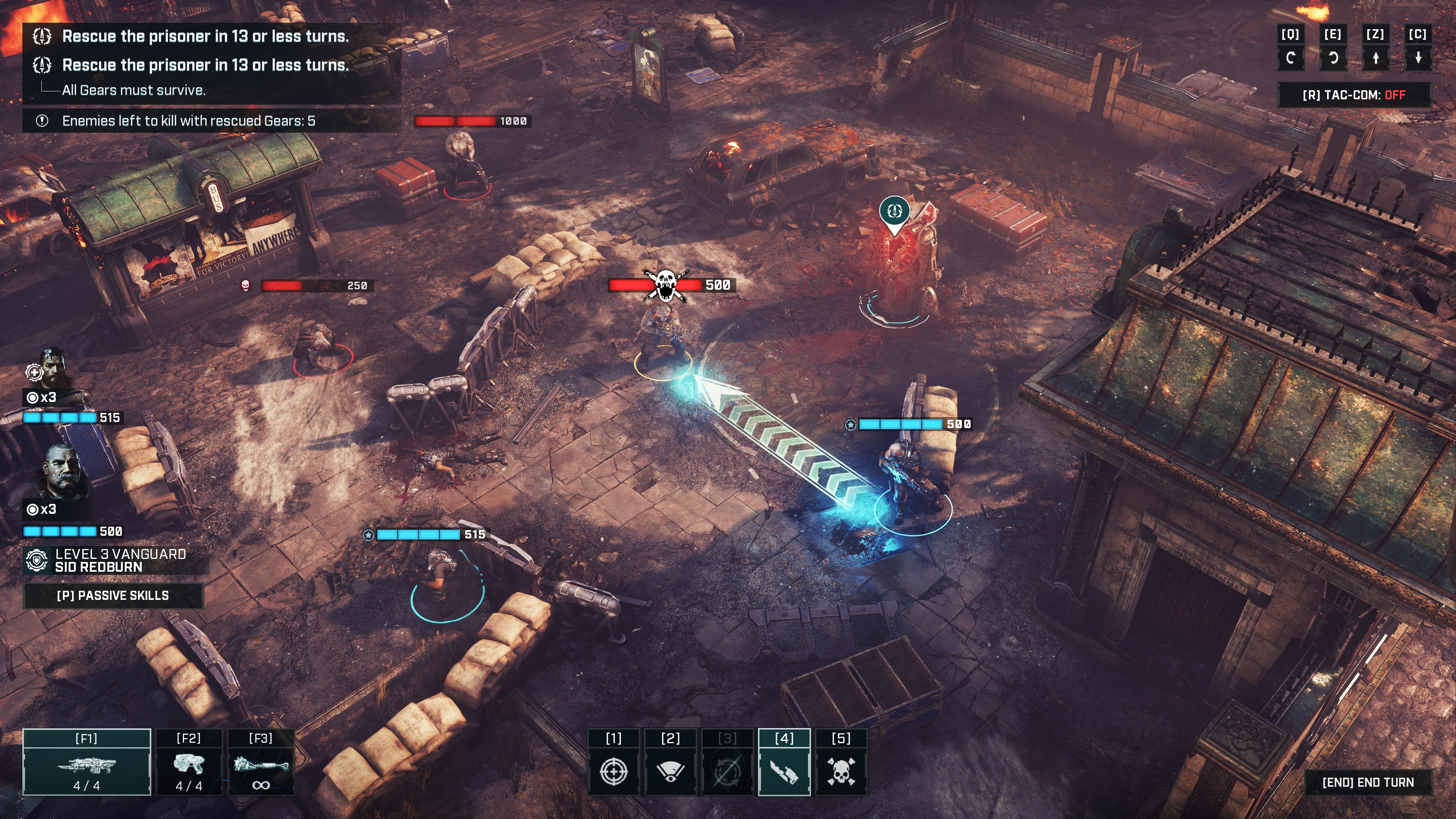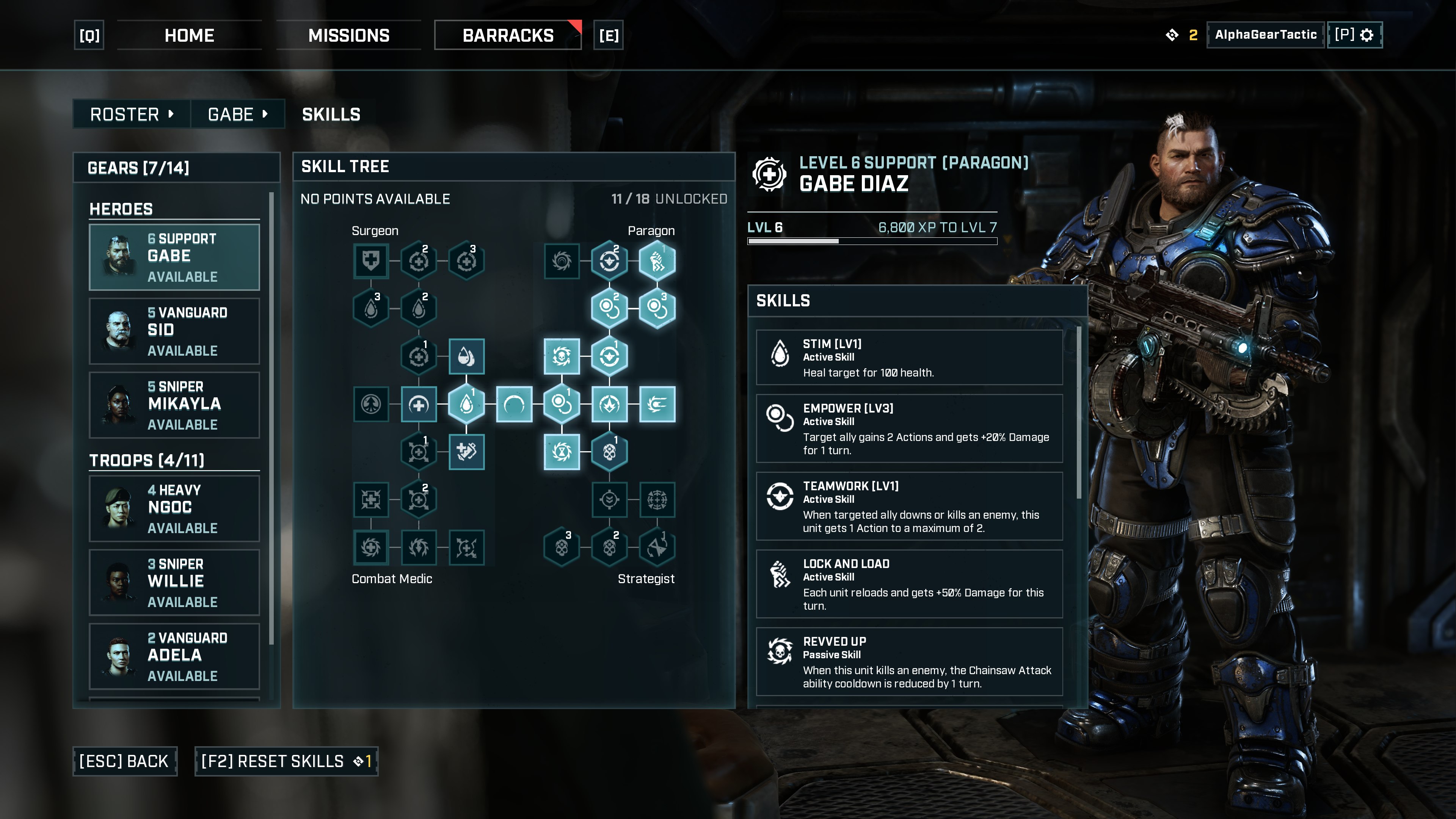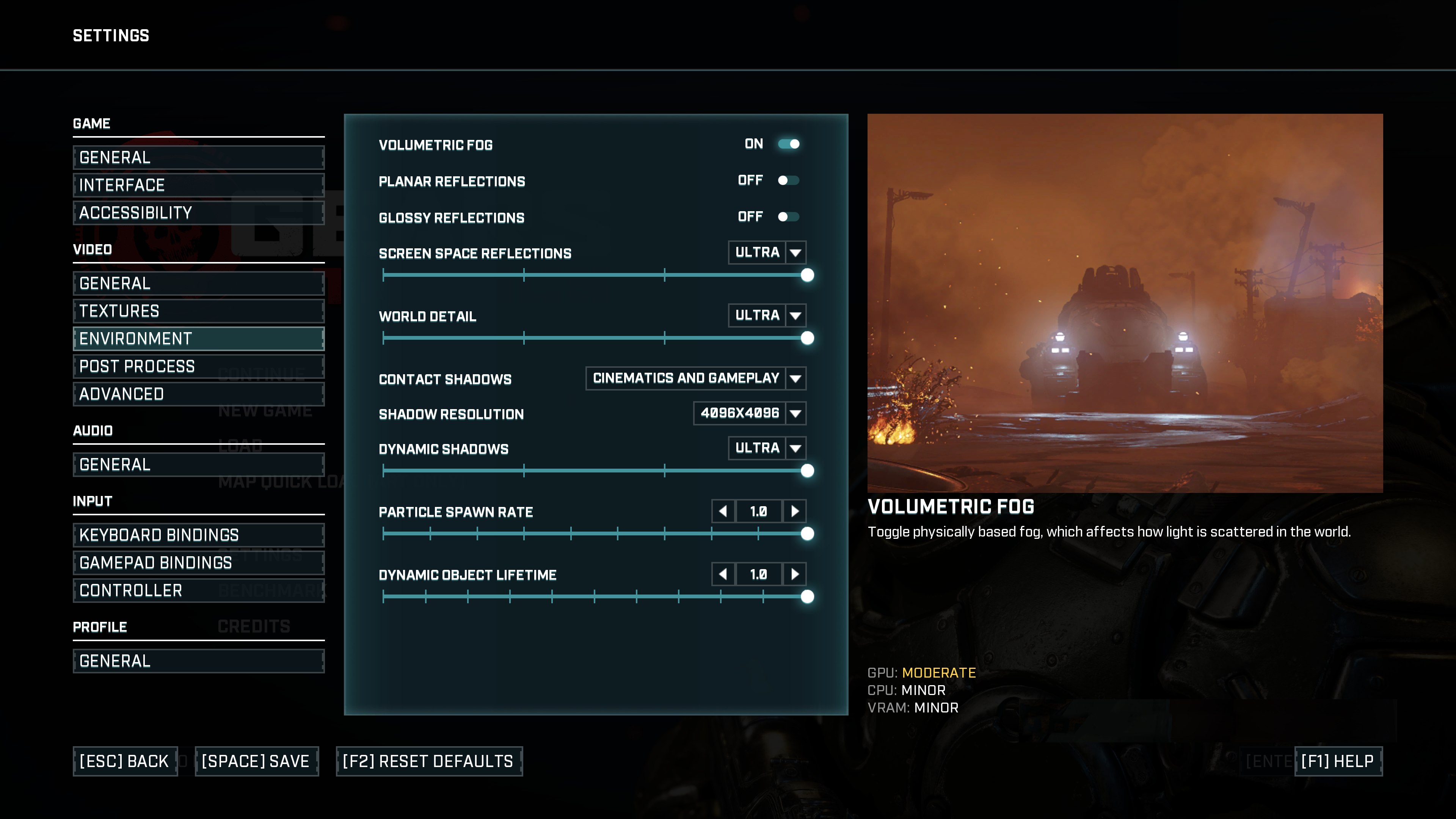Gears Tactics is a shockingly good strategy game
Gears Tactics sets itself apart from XCOM with smart reinventions of overwatch, action points, skill trees, and more.
Gears Tactics was announced at E3 two minutes after a Gears Funko Pop mobile game, which automatically made me skeptical. Spin-offs can be a bad even when they aren't playing second fiddle to Funko Pops. I didn't expect Gears Tactics to be bad so much as I didn't expect much at all. But after playing Tactics for three hours, I was taking it seriously.
What I found was really fun strategy combat, a bit breezier than XCOM but a far better adaptation of Gears than I thought possible. Even in the context of an XCOM-inspired strategy game, chainsawing baddies in a shower of ludicrous gore is still the good stuff.
Gears Tactics brings several surprising and thoughtful new ideas to what could've been a very derivative game, and the developers at The Coalition and Splash Damage really wanted to get across how serious they're taking this as a game built first and foremost for the PC. "From day one we wanted to write a love letter to PC gaming, care of the Gears brand," said design director Tyler Bielman. "It was really always in our minds that we wanted a deep enough experience, with compelling enough gameplay to really hold a PC gamer's attention."
That commitment to the PC also extends to the tech powering Gears Tactics, from its detailed cutscenes to its embarrassment of graphics settings. But first, we had to talk about executions.
From shooter to strategist
From the very beginning we wanted to see if we could pace up this genre and create a more action-feeling game.
Tyler Bielman
Gears Tactics immediately sets itself apart from XCOM in a few obvious ways. Movement isn't locked to a grid, and instead of the two actions XCOM soldiers can typically take on a turn, Gears units get three. This is a bigger difference than it sounds, because Gears' more freeform approach means you can choose to stand in place and fire three times, or you can fire and then move, something I'm annoyed the average XCOM soldier can't do every time I play it.
Tactics has a cool take on overwatch, where you drag out a cone representing the zone overwatch will trigger in. The further out you aim, the wider the cone, but the less accurate your soldier's shots will be. You get to see where the Locust have drawn their overwatch, too, and your Gears have a pistol ability called Disabling Shot to knock an enemy out of overwatch.
A chainsaw to the back works too, of course.
The biggest gaming news, reviews and hardware deals
Keep up to date with the most important stories and the best deals, as picked by the PC Gamer team.

For the first hour of Gears Tactics I used overwatch liberally, playing more defensively and only leaving cover when it felt safe. But once emergence holes started barfing up piles of enemies behind my cover, or just overwhelming me with numbers, I realized three action points per turn weren't always going to be enough. I was going to have to get into the execution business.
Mortally wound an enemy and they'll fall to their knees, just like your own soldiers do when they're bleeding out. This exact system is in the Gears shooters, but the way it becomes the core mechanic of Gears Tactics is genius. Bielman said that when the team first came up with the idea of rewarding the whole squad with a bonus action point for an execution, it was a big breakthrough.
"From the very beginning we wanted to see if we could pace up this genre and create a more action-feeling game," said Bielman. "Somewhere in the middle of production we had this idea of making the executions more special... [and] we were talking about how to amplify the feeling that the squad is interconnected. So the idea was, well, if you execute an enemy, that could be free. Then it was like, 'wait, what if it gave everybody else an action point?'
"That was a big moment for us. It was when we started to find the fun of the game in a profound way. Then it became about making sure the cadence of the encounters gave you lots of opportunities to do that. We built around this idea of a tactical turn-based game where you wanted to push forward and build momentum as you went. The execution mechanic became the north star for how to do that."
Like other great strategy mechanics, chaining executions engages that part of my brain that loves to optimize. It reminds me of starting every round of Into the Breach thinking "How the hell am I going to get out of this one?" In one fight I accidentally got my grizzled hero Sid surrounded and shot to hell. It took almost all the actions of my other soldiers to thin the herd and revive him. With Sid on his feet, I was able to execute a nearby Locust, which turned out to be clutch because I got Sid knocked down again seconds later, and without the bonus actions from that execution, no one in the squad would've been left to revive him a second time. Turns out bayonet charging at a shotgun-wielding Grenadier Locust is a bad move, because they automatically counter melee attacks.
The execution system lets Gears Tactics' designers throw more enemies at you than similar strategy games, and it feels appropriately Gears to be able to chew through baddies more quickly and viciously than in XCOM. Your soldiers are a little heartier, too, and hero characters like Sid and the protagonist Gabe have a once-per-mission self-revive that lets them get back on their feet. This fits the more story-focused design of Gears Tactics compared to XCOM's sandbox approach, although strategy masochists will be relieved to hear that harder difficulty settings remove the self-revive (and Ironman mode, where there's no save reloading, is an option, too).
There's no base building like XCOM HQ, and instead the focus is on upgrading your soldiers' weapons
The story follows Gears 5 star Kait Diaz's father Gabe during the war with the Locust, and each mission begins and ends with a cutscene that looks on par with a Gears shooter. Most of the characters are still musclebound meatheads and the melodrama seems about as nuanced as a daytime soap, but the presentation goes a long way. Gears is a universe of chest-high walls, but it also has gnarly guns and grandiose classical architecture and a degree of personality missing in XCOM's generic near-future military sci-fi. In a genre that can lean towards neverending procedural campaigns, too, it's nice to be playing a story with a clear start and end—although you can keep playing after the story's over.
"There is no fixed end state," said Bielman. Instead there's an endgame called Veteran mode, where you can retain your soldiers and go on an infinite number of "remix" missions while leveling up your Veteran rank, and you'll supposedly be able to play for "quite a long time" before you start seeing repeated combinations of maps and objectives.
Bielman said that earlier in development, Gears Tactics had some meta economy features that didn't make the cut. "We have a philosophy in Gears of being very straightforward with the player and what you see is what you get, and not to create barriers to play when there don't need to be any. Some different systems had economy in them because it felt like they were supposed to in this genre. Once we took those systems out, it felt much more like a Gears game and a more open experience."
There's no base building like XCOM HQ, and instead the focus is on upgrading your soldiers' weapons with items you find on the battlefield and rewards from completing missions and bonus objectives. Veteran mode is where you're going to hunt down and earn much of Gears Tactics' especially powerful "legendary equipment." Customization also comes from a cool, fairly open-ended skill tree that lets you mix and match from four different specializations per class.
The five classes (Vanguard, Support, Heavy, Scout, Sniper) each have a single defining weapon, and gun mods can change things like crit chance and accuracy and mag size. Support uses the classic chainsaw lancer, while Scout gets the gnasher shotgun and Vanguard uses the 'retro' lancer with a bayonet (which has my favorite execution, impaling and lifting these giant meat monsters in the air like rag dolls. "In Gears, a lot of the time the role of the character is defined by the weapon they're carrying. So attaching a primary weapon to each class sort of centered the class made a lot of sense to us," said Bielman. "The last piece of the puzzle was the equipment that goes on the weapons themselves, making sure we had nice synergies between what you can do with a weapon when you find a random piece of equipment, and how that dovetails into skills."
And yes, you can customize the hell out of your recruits. Gears Tactics knows you have to look good on the battlefield, too. And the whole game looks good around your beefy squaddies, because Tactics is actually powered by the same tech as last year's Gears 5, with plenty of specialized tweaks.

Going big on PC
Before we talked about all of Gears' fancy tech features, technical director Cam McRae told me that they've built Tactics to really scale. That means running well on laptops—The Coalition has been working with Intel to optimize for its Xe GPUs supposedly coming out this year, which includes a graphics card and the integrated graphics in its CPUs. McRae's goal is running Gears Tactics on those laptop CPUs at 1080p, 60 fps and medium settings. On the most recent Intel Ice Lake chips, it'll still run at 1080p 30. And gaming laptops with discrete graphics chips, of course, will be able to handle much higher settings.
I jumped into the settings menu and found a bounty of options. Most of them carry over from Gears 5, which had a great PC port. This includes the obvious options we want to see in any game like rebindable keys, and piles of graphics settings, but it also offers an unusual degree of UI flexibility. You can turn off hints and line-of-sight markers and adjust how sensitive the edges of the screen are when you scroll with the mouse. As in past Gears games, you can even turn off the gore and swearing.

One option I want to highlight is Tactics' colorblind support, which goes above and beyond when many games still lack a colorblind mode at all.
"The way we treat colorblind, and I don't know if I've seen it in other games, is we do it as a full screen pass," said McRae. "We tint the whole screen through a shader. If you switch to protanopia or monochrome ... instead of just red becoming not red anymore, the whole game gets a pass. If you have colorblindness, it visually works in a more full way."
McRae told me that as The Coalition devs were finishing Gears 5, they were bringing that work into Gears Tactics. The two share a customized version of UE4 that's kept close to identical, except Gears Tactics "has a bunch of custom stuff that Gears 5 doesn't have." That includes completely real-time lighting and global illumination and an entirely new AI system. Where AI programming in typical Gears games is "very reactionary"—the enemies just want to get in cover, and find the best angle to shoot you from—Gears Tactics really makes them think. It may seem simpler because it's not a real-time game, but Tactics' AI requires more complex programming.
"We did a bunch of work on the AI planning phase so that it wouldn't stutter the game while it was thinking," McRae said. "While the AI is running it's actually forward simulating the world in multiple different ways. So it'll make a decision and then simulate what will happen, and then branch off and keep going, keep going, keep going, to find the best possible solution. And that can get scaled by difficulty. We basically run that over a couple seconds, and then put a cap on it. So we try to get the best possible solution within 2-3 seconds, and then as they take action and things happen they can stop and re-evaluate."
Gears Tactics' designers clearly enjoyed pushing how many enemies they could fit into battles, which brought up the interesting push-pull between the design team and engineering, which had to ensure those enemies wouldn't bog the game down. When more enemies on screen would mean sacrificing elsewhere, Bielman said the team "solved it by making encounters have a lot more character to them."
To find the number that felt just right, the designers created encounters with piles and piles of enemies, trying to find the point it went from the fun kind of overwhelming to unmanageable. Once they hit the point where fights just weren't fun, they scaled it back, and focused on making the composition of Locust squads more interesting puzzles. When Kantus priests who buff their allies and Theron guards with deadly torque bows show up, for example, you'll likely want a sniper to pick them off from afar or a scout to sneak behind the front lines to get in close range.
"There's a moment in one of the campaign levels where you come around the corner and we just drop 13, 14 wretches coming at you," said Bielman. "And I don't think we would've found that as a moment had we not been trying to find the edges of what we could do. We realized we really didn't need twice that many. Constraints always make design better."
With the experience of shipping Gears 4 and Gears 5 on PC behind them, The Coalition anticipates a smooth launch for Gears Tactics on PC. It won't ship with any mod tools, but Bielman said they made some decisions to ensure modding wouldn't be locked off. "We're looking forward to what people can do with the game," he said. "The modding community is exciting for us."
Gears Tactics launches on both PC on April 28, and I'd say from my time with it that it's a very different sort of spin-off than the Halo Wars games, which prioritized adapting real-time strategy for console. This is every inch a PC strategy game that just so happens to star some big beefy soldiers who once called the Xbox home.
Correction: This story originally stated that Gears Tactics was also coming to Xbox One on April 28, but it is actually coming to Xbox at an unannounced later date.

Wes has been covering games and hardware for more than 10 years, first at tech sites like The Wirecutter and Tested before joining the PC Gamer team in 2014. Wes plays a little bit of everything, but he'll always jump at the chance to cover emulation and Japanese games.
When he's not obsessively optimizing and re-optimizing a tangle of conveyor belts in Satisfactory (it's really becoming a problem), he's probably playing a 20-year-old Final Fantasy or some opaque ASCII roguelike. With a focus on writing and editing features, he seeks out personal stories and in-depth histories from the corners of PC gaming and its niche communities. 50% pizza by volume (deep dish, to be specific).

